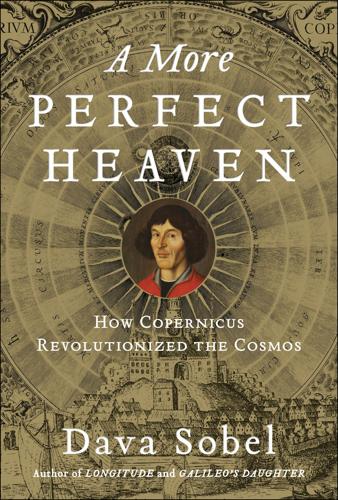
More Perfect Heaven: How Copernicus Revolutionised the Cosmos
by
Dava Sobel
Published 1 Sep 2011
And all learned minds will join in my assessment of these theories as soon as the books we now have in press in Nuremberg are published.” Chapter 8 On the Revolutions of the Heavenly Spheres I confess that I shall expound many things differently from my predecessors, although I shall do so thanks to them, and with their aid, for it was they who first opened the road of inquiry into these very questions. —FROM COPERNICUS’s INTRODUCTION TO BOOK I, On the Revolutions of the Heavenly Spheres, 1543 Alone again with his fears of ridicule after Rheticus left, Copernicus fussed over his original manuscript. He jotted notes in the margins regarding a few new thoughts and corrections.
…
Cambridge: Cambridge University Press, 2000. Copernicus, Nicolaus. Complete Works. Translation and commentary by Edward Rosen. Baltimore: Johns Hopkins University Press, 1978 (vol. 2, On the Revolutions) and 1985 (vol. 3, Minor Works). ———. On the Revolutions of the Heavenly Spheres. Translated by A. M. Duncan. New York: Barnes & Noble, 1976. ———. On the Revolutions of the Heavenly Spheres. Translated by Charles Glenn Wallis. Annapolis: St. John’s Bookstore, 1939. Danielson, Dennis. The First Copernican: Georg Joachim Rheticus and the Rise of the Copernican Revolution. New York: Walker, 2006. Donahue, William H., trans.
…
A More PERFECT HEAVEN How Copernicus Revolutionized the Cosmos DAVA SOBEL Contents Cover Title Page Decdication “To the Reader, Concerning … This Work” Part One • Prelude Chapter 1 Moral, Rustic, and Amorous Epistles Chapter 2 The Brief Sketch Chapter 3 Leases of Abandoned Farmsteads Chapter 4 On the Method of Minting Money Chapter 5 The Letter Against Werner Chapter 6 The Bread Tariff Part Two • Interplay “And the Sun Stood Still”. ACT I “And the Sun Stood Still”. ACT II Part Three • Aftermath Chapter 7 The First Account Chapter 8 On the Revolutions of the Heavenly Spheres Chapter 9 The Basel Edition Chapter 10 Epitome of Copernican Astronomy Chapter 11 Dialogue Concerning the Two Chief Systems of the World, Ptolemaic and Copernican Chapter 12 An Annotated Census of Copernicus’ De Revolutionibus Thanksgiving Copernican Chronology Notes on the Quotations Illustration Credits Maps Bibliography Footnotes A Note on the Author Also by Dava Sobel Imprint To my fair nieces, AMANDA SOBEL and CHIARA PEACOCK, with love in the Copernican tradition of nepotism.
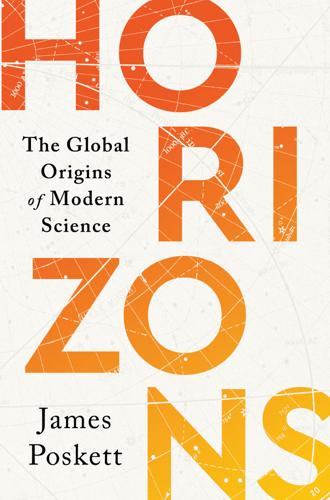
Horizons: The Global Origins of Modern Science
by
James Poskett
Published 22 Mar 2022
To solve this problem, Copernicus turned to the work of one of the Islamic astronomers we met earlier: Nasir al-Din al-Tusi. On the Revolutions of the Heavenly Spheres contains a diagram which is identical to the one found in al-Tusi’s Arabic writings. The similarity is striking, right down to the equivalent choice of letters, in both Latin and Arabic, used to label many of the elements. Copernicus most likely learned about al-Tusi from a Byzantine Greek translation of the Arabic original. Copies of such manuscripts, brought from Istanbul following the Ottoman conquest, could be found in a number of Italian libraries at the time. The diagram in On the Revolutions of the Heavenly Spheres shows the Tusi couple in action.
…
This mathematical tool, invented in thirteenth-century Persia, now found its way into the most important work in the history of European astronomy. Without it, Copernicus would not have been able to place the Sun at the centre of the universe.26 9. A diagram illustrating the ‘Tusi couple’ from Nicolaus Copernicus, On the Revolutions of the Heavenly Spheres (1543). The publication of On the Revolutions of the Heavenly Spheres in 1543 has long been considered the starting point for the scientific revolution. However, what is less often recognized is that Nicolaus Copernicus was in fact building on a much longer Islamic tradition. Ibn al-Haytham, writing in eleventh-century Egypt, had long ago pointed out the contradictions in Ptolemy’s model of the universe, particularly the idea that the planets moved in perfect circles.
…
Genetic States Epilogue: The Future of Science Acknowledgements Notes Index About the Author Copyright About the Publisher Illustrations 1.Illustration of hummingbirds from the Florentine Codex, 1578 (Private collection) 2.Engraving of an armadillo from Francisco Hernández, The Treasury of Medical Matters of New Spain, 1628 (Private collection) 3.Illustration from Martín de la Cruz, The Little Book of the Medicinal Herbs of the Indians, 1552 (Wellcome Images) 4.Oldest surviving European map to include the Americas, 1500 (Wikipedia) 5.Aztec map of Misquiahuala, New Spain, c.1579 (University of Texas) 6.The Fakhri Sextant (Wikipedia) 7.Arabic manuscript translation of Claudius Ptolemy’s Almagest, copied in Spain in 1381 (Kislak Center for Special Collections, University of Pennsylvania) 8.Diagram illustrating the ‘Tusi couple’ from Nasir al-Din al-Tusi, Memoir on Astronomy, 1261 (MPIWG Library/Staatsbibliothek Berlin) 9.Diagram illustrating the ‘Tusi couple’ from Nicolaus Copernicus, On the Revolutions of the Heavenly Spheres, 1543 (Library of Congress) 10.Taqi al-Din working in the Istanbul observatory (Alamy) 11.Two ‘magic squares’ from an early modern Arabic mathematical manuscript (Alamy) 12.The Astronomical Bureau in seventeenth-century Beijing (Wikipedia) 13.The Samrat Yantra at the Jantar Mantar observatory in Jaipur, India (Jorge Lascar) 14.Frontispiece from Francis Bacon, The New Organon, 1620 (left), copied from Andrés García de Céspedes, Rules of Navigation, 1606 (right) (Wikipedia) 15.The ‘Nazca Lines’, dating to around 500 bce, in southern Peru (NASA Earth Observatory) 16.Transit of Venus as represented by James Cook in 1769 (Alamy) 17.Micronesian ‘stick chart’ (Brew Books) 18.Tupaia’s chart of the Society Islands, 1769 (Wikipedia) 19.Snow ridges formed by wind erosion in the Arctic (Wikipedia) 20.The kola nut from the ‘Bichy’ tree as depicted in Hans Sloane, The Natural History of Jamaica, 1707–25 (Biodiversity Heritage Library) 21.
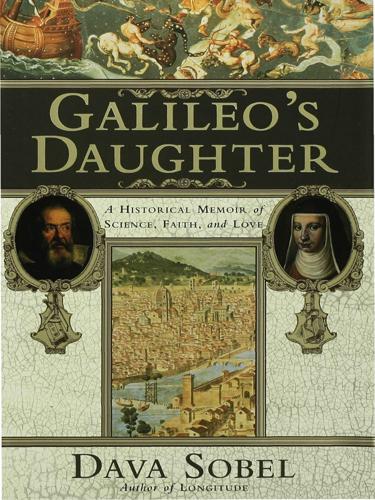
Galileo's Daughter: A Historical Memoir of Science, Faith and Love
by
Dava Sobel
Published 25 May 2009
Around it, the Sun, the Moon, the five planets, and all the stars spun eternally, carried in perfectly circular paths by the motions of nested crystalline celestial spheres. This heavenly machinery, like the gearwork of a great clock, turned day to night and back to day again. In 1543, however, the Polish cleric Nicolaus Copernicus flung the Earth from its central position into orbit about the Sun, in his book On the Revolutions of the Heavenly Spheres, or De revolutionibus, as it is usually called. By imagining the Earth to turn on its own axis once a day, and travel around the Sun once a year, Copernicus rationalized the motions of the heavens. He saved the enormous Sun the trouble of traipsing all the way around the smaller Earth from morning till evening.
…
Because, O deluded man, neither do I know how my arteries are of service to me, nor my cartilages, spleen, or gall; I should not even know that I had gall, or a spleen, or kidneys, if they had not been shown to me in many dissected corpses.” Sagredo’s frequent anatomical analogies throughout the Dialogue recall that Andreas Vesalius published his revelations about human anatomy, On the Fabric of the Human Body, in 1543—the same year as Copernicus’s On the Revolutions of the Heavenly Spheres, and with just as much affront to Aristotle. Even while Galileo sat writing the Dialogue nearly a century later, Aristotelians still clung to the heart as the origin of the nerves, though Vesalius had followed their course up through the neck to the brain. Vesalius, who took his medical degree at Padua and lectured all over Italy, had also staged sensational popular demonstrations showing the male and female skeletons to contain the same number of ribs, thus defying the widespread belief, based on the Book of Genesis, that men came one rib short.

Age of Discovery: Navigating the Risks and Rewards of Our New Renaissance
by
Ian Goldin
and
Chris Kutarna
Published 23 May 2016
Copernicus challenged the deep assumptions upon which all astronomy was based—and overturned them. The twentieth-century philosopher Thomas Kuhn coined the phrase “paradigm shift” to distinguish this special class of achievement. Because our working assumptions are deeply embedded in our thinking, such shifts are extremely difficult to make. (Copernicus’s 1543 book, On the Revolutions of the Heavenly Spheres, was banned by the church for over 200 years.) They’re also extremely important, since every paradigm has limits and eventually those limits must be confronted. Otherwise, progress stalls. Copernicus’s heliocentric theory had its own flaws—the sun is no more the center of the universe than the Earth is—but it took astronomy past Ptolemy and raised many new avenues of productive inquiry.
…
Highlights of Astronomy, Volume 3: As Presented at the XVth General Assembly and the Extraordinary Assembly of the IAU. Boston: D. Reidel Publishing Company. 2. Sobel, Dava (2011). A More Perfect Heaven: How Copernicus Revolutionized the Cosmos. London: Bloomsbury. 3. Copernicus, Nicolaus (1473–1543) (1995). “Introduction, Book 1.” On the Revolutions of the Heavenly Spheres. Translated by C. Wallis. New York: Prometheus Books. 4. Ferguson, Niall (2011). Civilization: The West and the Rest. London: Allen Lane; Mokyr, Joel (1990). Twenty-Five Centuries of Technological Change. London: Harwood Academic. 5. OECD (2015). In It Together: Why Less Inequality Benefits All.
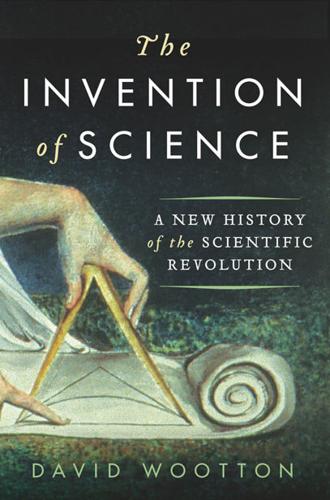
The Invention of Science: A New History of the Scientific Revolution
by
David Wootton
Published 7 Dec 2015
Finally, the Copernican revolution is a conceptual mutation or transformation, which made the sun, not the earth, the centre of the universe, and placed the Earth in movement around the sun instead of the sun around the earth. For the first hundred years after the publication of Copernicus’s book On the Revolutions of the Heavenly Spheres in 1543 only a fairly limited number of specialists were familiar with the details of his arguments, which were only generally accepted in the second half of the seventeenth century. A failure to distinguish these senses, and to ask which of them the first users of the term ‘the Scientific Revolution’ had in mind, has caused a tremendous amount of confusion.
…
Quine) 514n Commentariolus (Nicolaus Copernicus) 137–8, 139, 142 common sense 529, 532, 533, 537, 543 Common Sense (Thomas Paine) 20 compasses 327–30 deviation and dip 481 discovery of America and 60 Greeks and Romans 62 magnets and 327–8 needles of 388 Compendium of Arithmetic, Geometry, Proportions and Proportionality, A (Luca Pacioli) 176 competition 92–3, 104, 108 Conan Doyle, Arthur 400 Conant, James Bryant 394, 544 Concerning the Recent Phenomena of the Aetherial World (Tycho Brahe) 193 Congo River 79 Consideratione (Giambattista Benedetti) 27 consistency 270n Constantinople 184, 186n, 187, 451 constraint 589–90 constructivism 516–17, 591 Contarini, Cardinal Gasparo 73 Continuation of New Experiments, A (Robert Boyle) 492, 503 Continuation of the New Digester, A (Denis Papin) 504–10 controversy and change 245–7 Conversations on the Plurality of Worlds (Bernard de Fontenelle) 231 Conversations with Galileo’s Starry Messenger (Johannes Kepler) 8–9, 302 Copernican Revolution, The (Thomas Kuhn) 18, 145, 246n, 516 Copernicus, Nicolaus 137–59 see also On the Revolutions of the Heavenly Spheres acceptable margins of error for 262 altera orbis terrarium 132 background 137 Bacon dismisses 107 Bellarmine’s attitude to 388 Bruno and 146–9 Catholic condemnation of 104, 149, 197n, 214 conception of Earth 3n contemporary knowledge of 7 crater named after 102 Descartes and 362 difficulties implicit in theories 218 Digges and 149–51, 154–9 Earth as one spherical globe 138 Earth’s rotation described 139 Galileo and 45, 91–2, 233, 267, 358, 371, 395n Gilbert tries to justify 329 Greek forebears 78, 91 Gresham’s Law and 304 heliocentrism and geoheliocentrism 140 Hobbes on 39 hypotheses of 386 Kepler’s Rudolphine tables 307 Kuhn on 13n, 55, 562 laws of astronomy claim 370 mathematician, as 424 microcosm and macrocosm 244 monetary reform expertise 206n nature of the earth 525–6 opposition to 145 Ptolemy and 144–5, 152, 154, 246 reading material of 141–3 reflected light of planets 245 Sacrobosco and 229 spheres of earth and water 116 success of system, factors in 516 summary 137 three systems of the cosmos 97, 99 two spheres theory rejected 139 Tycho Brahe and 140, 193–5, 223, 226, 227 Venus and Earth 222 Vesalius and 183 copyright 101n Coriolanus (William Shakespeare) 5 corpuscular philosophy 433–4, 443, 446, 447, 460 Cortes, Hernan 38–9 Corvinus, Lawrence 139 Cosimo II (de’ Medici) 214 Cosmographiæ introductio, The (Martin Waldseemüller) 59n, 124 Cosmographic Book (Peter Apian) 201, 202 Cosmographic Mystery, The (Johannes Kepler) 212 Cotes, Roger 322, 375 Coulanges, Fustel de 550n Course of Experimental Philosophy, A (J.
…
Collingwood) 431 Imaginary Invalid, The (Molière) 393 immutable mobiles 303 impetus theory 574 Index of Prohibited Books 276, 379 indexes, importance of 305n India 128, 137, 177 Indiscreet Jewels, The (Denis Diderot) 51 Industrial Revolution clockwork facilitates 486 contribution of science to 479, 508 early medieval forerunner 484 effect and duration 18, 429 geared machinery 484 precision instrumentation of 423 Scientific Revolution and 13, 17, 19, 476 16th century progress claimed 431, 446 skills involved 445 steam engine and 490 inertia 19, 50, 372 Ingrassia, Giovanni Filippo 85, 95, 96 Inquisition (Roman) Bruno burnt alive 10, 149 della Porta and 276 Descartes and 362 Galileo condemned by 37, 107, 545 Stellato before 157 torture by 314–15 Institutes of the Orator (Quintilian) 403 Institutiones (Cassiodorus) 451n instruments, scientific 209, 244–5, 560 Instruments for the Restoration of Anatomy (Tycho Brahe) 180 intellectual property 337 Intelligent Design 445 internet, the 593–4 interpretation 83 Interpreter, The (John Cowell) 402 Introductio ad veram physicam (John Keill) 473 Introductio geographica (Peter Apian) 189 Introduction to the Study of Experimental Medicine, An (Claude Bernard) 426 invention 61n, 66–7, 82n Isaac, Joel 585–6 Isis 512 Islam 37, 66, 113 Italian (language) 30 Jackson, Thomas 402 James I, King 159 (and see below) James VI, King (of Scotland) 6, 10 (and see above) Jansen, Cornelius 289–90 Jansenism 295, 297 Japanese 484 Jardin des Plantes, Paris 356 Jerusalem 115n, 119, 120 Jesuits Aristotle and the new science 537n Clavius leading astronomer of 118 Galileo and 37, 197n, 225, 226 Gilbert’s ideas and 324, 328 missionaries 7 scholastic philosophers at colleges 31 van Helmont and 291 Venus orbiting the sun 24n Jews 66, 76 John of Glogau 72 John of Jandun 114 John of Saxony 337 John of Wallingford 118 Johns, Adrian 26n Johnson, Dr Samuel 26, 284, 474 Jones, William 564 Jonson, Ben 9, 355 Joubert, Laurent 304 Journal des sçavans 341 Jovilabe 480 Judaei, Themo 117, 135, 326 judgement 422 Julius Caesar 99 Julius Caesar (William Shakespeare) 5 Jupiter, moons of difficulties caused by 218 eclipses of 480 Galileo discovers 38, 86, 88, 407 Kepler’s terminology for 48 measuring longitudes by 481 naming of 96, 99 rapid confirmation of discovery 89, 92, 237 Rømer’s work 518 use as a clock, 215 juries 407, 419, 426 Kant, Immanuel 327 Kay, John 484 Keill, John 473 Kelley, Donald 551 Kepler, Johannes 211–14, 262–6 barnacle geese 268 conflating maths and natural philosophy 24n contacts Galileo and responses from 220–1, 224 contemporary knowledge of 8 Conversation with Galileo’s Starry Messenger 9, 302 Epitome astronomiae Copernicanae 130n, 152n, 252 escaping from circular movement 390n Gilbert’s model of magnetism and 329, 516–17 his teacher 192 Holy Roman Emperor and 31 hypotheses, types of 386–7 infinite size of universe 243 laws of planetary motion 11 Mars and 193, 301, 305 mathematician, as 424 Mercury in transit 223n Newton on 376, 393 on published writings 198n printing press recognised by 306 Rudolphine tables 307 satellites 48 sea and land levels 130n speed of light measurements and 521 universe as a clock 485 variety of publications by 205 King, Gregory 259, 260 Kircher, Athanasius 279 Knauss, Friedrich von 445 Knieper, Hans 196 knowledge access to 78–9 Aristotle’s concept of 68 as power 83–4 circulation of 340–1 experience and 81, 125n, 253, 320, 341, 421 fact as basis of 252, 297, 309 gained from discovery 80–1 Gassendi’s theory of 410 Hobbes on 298, 546, 548–9 ‘knowledge economy’ 479 Locke on 405, 420 Merton on 96 Montaigne on 557, 559, 561 new concepts of 397 no new knowledge to be had 62, 74, 78, 104 OED distinctions 420 Renaissance attitudes 73 sensation and 322 types of 323, 395n various attitudes to 321 vocabulary to be used 541–2 Wittgenstein on 23, 45 Knowledge and Social Imagery (David Bloor) 580, 589 Koch, Robert 540 Kosmotheoros (Christiaan Huygens) 234 Koyré, Alexandre coining ‘Scientific Revolution’ 16, 17, 20 ideas of place and space 19 quoted 595 science and progress 512 thought, importance of 50 Kuhn, Thomas see also Structure of Scientific Revolutions, The alternative views of science 538, 542, 543 coining ‘Copernican Revolution’ 18, 55, 145 see also On the Revolutions of the Heavenly Spheres (Nicolaus Copernicus) communication between different intellectual worlds 46n Conant and 394, 544 consensus science 346 Copernicanism triumphs 516 Copernicus and Tycho Brahe 13n Isaac on 585–6 Koyré’s influence 19 new approach of 561–2 on Newton 382 on reading outdated texts 110–11 opposition of science and technology 479 phases of Venus 246n Ptolemaic science 573 publishes on English and French approaches 425–6 quoted 251 science and progress 512–13, 541 Wittgenstein and 45 ‘Kuhn loss’ 554n la Boëtie, Étienne de 555, 556, 557 La Condition postmoderne (Jean-François Lyotard) 41 La Mettrie, Julien Offray de 439 Lactantius 81 language 42n, 46–51, 53, 63–5, 579 Lanzarote 98n Large Hadron Collider 312 Laski, Harold J. 17, 19 Late Discourse (Kenelm Digby) 293 latent heat 478 Latin Cambridge entrance requirement 15 cloud names 47 Columbus and Galileo 57–8 experience and experiment 312, 347 ‘fact’, the word 254–5, 283–4, 289, 295 Lily’s Grammar 547 ‘scientific’, the word, and 29 Latin Dictionary, A (eds.
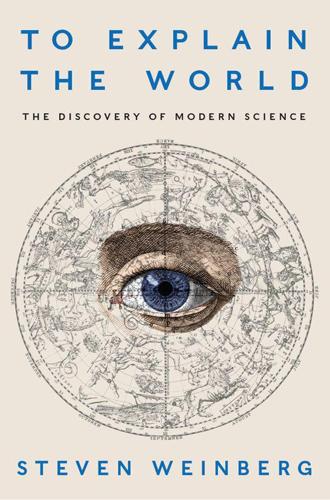
To Explain the World: The Discovery of Modern Science
by
Steven Weinberg
Published 17 Feb 2015
Goldstein, Journal of the History of Astronomy 33, 219 (2002). 5. For an English translation, see Nicolas Copernicus On the Revolutions, trans. Edward Rosen (Polish Scientific Publishers, Warsaw, 1978; reprint, Johns Hopkins University Press, Baltimore, Md., 1978); or Copernicus—On the Revolutions of the Heavenly Spheres, trans. A. M. Duncan (Barnes and Noble, New York, 1976). Quotations here are from Rosen. 6. A. D. White, A History of the Warfare of Science with Theology in Christendom (Appleton, New York, 1895), Volume 1, pp. 126–28. For a deflation of White, see D. C. Lindberg and R. L. Numbers, “Beyond War and Peace: A Reappraisal of the Encounter Between Christianity and Science,” Church History 58, 3 (September 1986): 338. 7.
…
Bowen and R. B. Todd (University of California Press, Berkeley and Los Angeles, 2004). Copernicus, Nicolas Copernicus On the Revolutions, trans. Edward Rosen (Polish Scientific Publishers, Warsaw, 1978; reprint, Johns Hopkins University Press, Baltimore, Md., 1978). , Copernicus—On the Revolutions of the Heavenly Spheres, trans. A. M. Duncan (Barnes and Noble, New York, 1976). , Three Copernican Treatises, trans. E. Rosen (Farrar, Straus and Giroux, New York, 1939). Consists of Commentariolus, Letter Against Werner, and Narratio prima of Rheticus. Charles Darwin, On the Origin of Species by Means of Natural Selection, 6th ed.
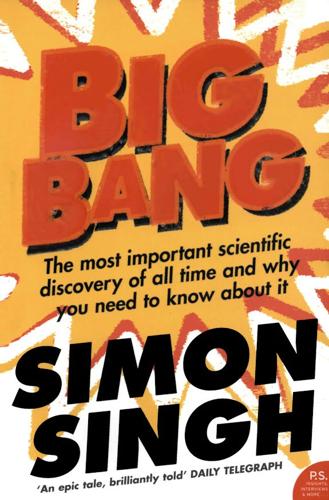
Big Bang
by
Simon Singh
Published 1 Jan 2004
He had planned to stay to oversee the entire printing process, but was suddenly called away to Leipzig on urgent business, and so handed responsibility for supervising publication to a clergyman by the name of Andreas Osiander. At last, in the spring of 1543, De revolutionibus orbium cælestium (‘On the Revolutions of the Heavenly Spheres’) was finally published and several hundred copies were on their way to Copernicus. Meanwhile, Copernicus had suffered a cerebral haemorrhage at the end of 1542, and was lying in bed, fighting to stay alive long enough to set eyes on the finished book that contained his life’s work.
…
And for many people the Sun-centred model was still too radical even to be contemplated, so much so that Copernicus’s work may have resulted in a new meaning for an old word. One etymological theory claims that the word ‘revolutionary’, referring to an idea that is completely counter to conventional wisdom, was inspired by the title of Copernicus’s book, ‘On the Revolutions of the Heavenly Spheres’. And as well as revolutionary, the Sun-centred model of the universe also seemed completely impossible. This is why the word köpperneksch, based on the German form of Copernicus, has come to be used in northern Bavaria to describe an unbelievable or illogical proposition. All in all, the Sun-centred model of the universe was an idea ahead of its time, too revolutionary, too unbelievable and still too inaccurate to win any widespread support.
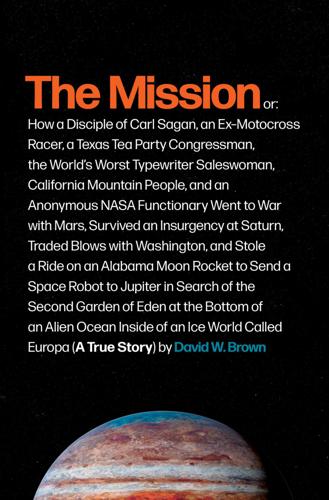
The Mission: A True Story
by
David W. Brown
Published 26 Jan 2021
Heliocentrism had been around for a while—the Greek astronomer Aristarchus of Samos advanced the idea in the third century BC, though his work was lost in the centuries to follow.33 More recently, just before his death in 1543, the Polish astronomer Nicolaus Copernicus had published On the Revolutions of the Heavenly Spheres, positing that there might be multiple centers of motion in the universe: that the planets circle the sun, and the moon orbits Earth. Absent proof, however, everyone went right on thinking that Earth was center of all things because it was safer, made more sense, and had zero incompatibilities with Scripture and its armed enforcers.
…
See also Jet Propulsion Laboratory; specific spacecrafts headquarters, 355–363 NASA Authorization Act (2010), 304 NASA Procedural Requirements 7120.5 revision, 314–315 press conferences, 340–341 National Research Council of the National Academies, 84–86 National Space Institute, 290–291 National Space Society, 290–291 Nelson, Bill, 301, 419n182 Neptune, 20, 21, 108 New Frontiers program, 146, 147, 151–152, 257 New Horizons (spacecraft) Decadal Survey endorsement of, 169 destination of, 108 power supply for, 13, 193–195 project management, 93, 136, 147–153, 193–195, 275, 278 Niebur, Curt on “announcement of opportunity,” 255–256 background, 102–106 on Clipper, 325 on Decadal Survey, 268–271, 274–275, 279 dedication to Europa, 85–88 on Europa funding, 329, 330–331, 334, 361–363 Europa Multiple Flyby Mission and, 377, 379, 380 on Europa’s water vapor plumes, 337–338, 340–341 funding concerns of, 95–98, 101–102 JIMO and, 107–108 management style of, 277–278, 323–324 marriage of, 103–107, 183–185, 226–228, 334–336 NASA briefing on Europa and, 359, 361 Outer Planets Assessment Group and, 98–100 Quad Studies and, 88–92, 101–102, 109, 155–156, 181, 183, 185–187 on SIP presentation, 363–366, 369, 370 at SIP telecon, 366–370 Niebur, Susan, 103–107, 183–185, 226–228, 334–336 Nixon administration, 57, 97–98, 242 ’N Sync, 296 nuclear launches, 159–162, 193–194, 364 Obama administration, 269, 272, 298–301, 303–304, 329–330 O’Keefe, Sean, 12–13, 15, 107, 300 On the Revolutions of the Heavenly Spheres (Copernicus), 22 Opportunity rover, 82, 124–126 Orion (space capsule), 300–301, 303 Outer Planets Assessment Group, 99–100, 181, 207, 324 Outer Planets Research Program, 95–100, 181, 206 Pacific Ocean, 389–390 Pappalardo, Robert “Bob” background, 1–3 on Clipper design, 354 on Decadal Survey, 261–262, 265–268, 270–273 early career, 6–7, 8–12, 376–377 education, 3–5, 7–8 on Europa exploration demise, 317–318 Europa Explorer and, 169–170, 180–181, 186–187 Europa Multiple Flyby Mission and, 376–385, 387–388 on Europa Science Advisory Group, 333 on funding, 185–186 Galileo project and, 9–11, 46 honoring Greeley, 319–320 housing choices, 403–404n44 JIMO and, 107, 164–165 JPL’s job offer to, 3, 11–12, 15–17, 30–32 Jupiter’s moons expertise of, 11, 166–169 leadership qualities of, 228–231, 347 management style of, 277, 278–279, 285–286 NASA Europa briefing, 355–363 on Quad Studies selection process, 226 sabbatical of, 320–323 on solar panels, 354 Pasadena, 12, 395–396nn14–15 Patel, Keyur, 235–236, 346, 432n314 Pathfinder program, 73–74 Petrie, George, 144–146 Phillips, Cynthia, 166–167 Phoenix lander, 82, 197–198 Pioneer program, 66, 107–109 Planetary Observer program, 61–67 planets, formation of, 20–21 plate tectonics, 165–169, 385–387, 389–390 Pluto.

Nexus: A Brief History of Information Networks From the Stone Age to AI
by
Yuval Noah Harari
Published 9 Sep 2024
More specifically, a completely free market of ideas may incentivize the dissemination of outrage and sensationalism at the expense of truth. It is not difficult to understand why. Printers and booksellers made a lot more money from the lurid tales of The Hammer of the Witches than they did from the dull mathematics of Copernicus’s On the Revolutions of the Heavenly Spheres. The latter was one of the founding texts of the modern scientific tradition. It is credited with earth-shattering discoveries that displaced our planet from the center of the universe and thereby initiated the Copernican revolution. But when it was first published in 1543, its initial print run of four hundred failed to sell out, and it took until 1566 for a second edition to be published in a similar-sized print run.
…
Is it possible to establish better curation institutions that use their power to further the pursuit of truth rather than to accumulate more power for themselves? Early modern Europe saw the foundation of exactly such curation institutions, and it was these institutions—rather than the printing press or specific books like On the Revolutions of the Heavenly Spheres—that constituted the bedrock of the scientific revolution. These key curation institutions were not the universities. Many of the most important leaders of the scientific revolution were not university professors. Nicolaus Copernicus, Robert Boyle, Tycho Brahe, and René Descartes, for example, held no academic positions.
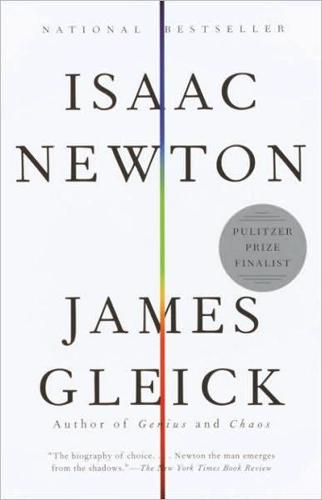
Isaac Newton
by
James Gleick
Published 1 Jan 2003
Just a few bright objects caused a puzzle—the planets, wanderers, like gods or messengers, moving irregularly against the fixed backdrop of stars. In 1543, just before his death, Nicolaus Copernicus, Polish astronomer, astrologer, and mathematician, published the great book De Revolutionibus Orbium Coelestium (“On the Revolutions of the Heavenly Spheres”). In it he gave order to the planets’ paths, resolving them into perfect circles; he set the earth in motion and placed an immobile sun at the center of the universe.4 Johannes Kepler, looking for more order in a growing thicket of data, thousands of painstakingly recorded observations, declared that the planets could not be moving in circles.
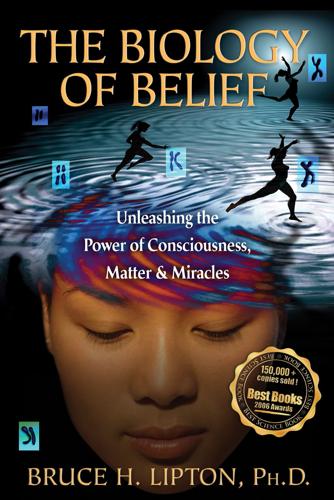
The Biology of Belief: Unleashing the Power of Consciousness, Matter & Miracles
by
Bruce H. Lipton
Published 1 Jan 2005
This powerful institution was in the business of suppressing scientific discovery when it was at odds with Church dogma. It was Nicolaus Copernicus, a savvy politician as well as a gifted astronomer, who launched the Spirit/Science split when he released to the public his profound manuscript De revolutionibus orbium coelestium (On the Revolution of the Heavenly Spheres). The 1543 manuscript boldly declared that the sun, not the Earth, was the center of the “Heavenly Spheres.” This is obvious today, but in Copernicus’ time it was heresy because his new cosmology was at odds with an “infallible” Church, which had declared the Earth to be the center of God’s firmament.
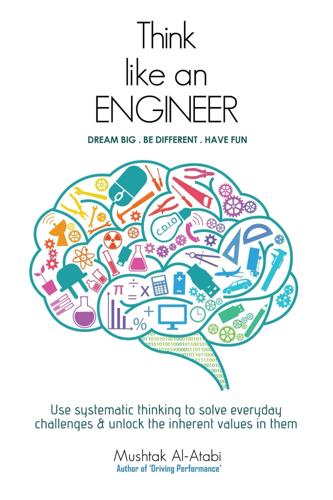
Think Like an Engineer: Use Systematic Thinking to Solve Everyday Challenges & Unlock the Inherent Values in Them
by
Mushtak Al-Atabi
Published 26 Aug 2014
Coupled with other innovations, this technology helped unlock the resource of information as more people could have access to books, which used to be very scarce and expensive. Continuous recording, organising and refining of information into knowledge and spreading it led to scientific reasoning and the questioning of the religious views on how the universe works. The publication of De revolutionibus orbium coelestium (On the Revolutions of the Heavenly Spheres) by Nicolaus Copernicus and De humani corporis fabrica (On the Fabric of the Human body) by Andreas Vesalius are often cited as the marking of the beginning of the scientific revolution and the age of reason. This tradition of scientific reasoning opened the doors for millions of people to question, understand, and build on the knowledge developed by others. 5.
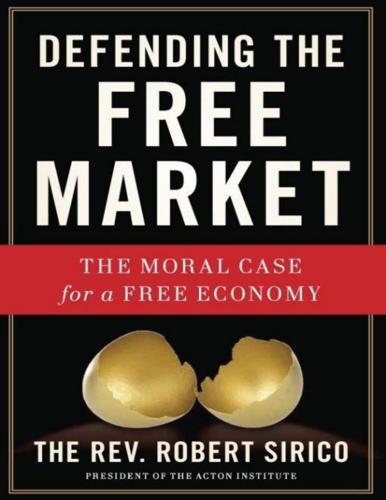
Defending the Free Market: The Moral Case for a Free Economy
by
Robert A. Sirico
Published 20 May 2012
Calvin Beisner, Where Garden Meets Wilderness: Evangelical Entry into the Environmental Debate (Eerdmans, 1997). 5 Wesley Granberg-Michaelson, ed., Tending the Garden: Essays on the Gospel and the Earth (Eerdmans, 1987); Calvin B. DeWitt, ed., The Environment and the Christian (Baker, 1991); Calvin B. DeWitt, ed., Missionary Earthkeeping (Mercer University Press, 1993). 6 Augustine, City of God, book 1, Chapter 20. 7 Nicolaus Copernicus, On the Revolutions of the Heavenly Spheres, Preface and Book I, trans. John F. Dobson and Selig Brodetsky (1947), 149–73; Milton Munitz, ed., Theories of the Universe: From Babylonian Myth to Modern Science (Simon & Schuster, 1965). 8 Terry L. Anderson and Donald R. Leal, Free Market Environmentalism, rev. ed. (Palgrave, 2001), chapter 5. 9 This phenomenon was confirmed by a path-breaking study in the 1990s.
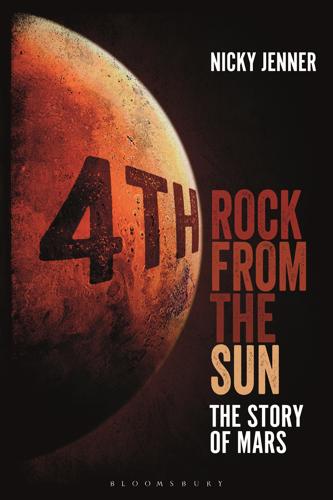
4th Rock From the Sun: The Story of Mars
by
Nicky Jenner
Published 5 Apr 2017
He may not have been polite, but nor was he wrong! Copernicus saw similar problems. As he approached the end of his life, he tried to align the old theories of Ptolemy and Aristotle with what he saw as he studied the sky. In the year of his death, 1543, Copernicus published his famous tome De Revolutionibus Orbium Coelestium (On the Revolutions of the Heavenly Spheres), in which he suggested the revolutionary idea that the Earth was not at the centre of the known Universe – the Sun was. He also suggested that the Earth moved in not one but two ways, both moving through space around the Sun and spinning on its axis. His assistant Rheticus, a scientist from present-day Austria best known for his work in trigonometry, helped him to publish De Revolutionibus; although Copernicus had formulated his ideas many years earlier, he had been so worried about a negative response from both the scientific and religious communities that he buried his work and decided not to publish it.

The Fourth Age: Smart Robots, Conscious Computers, and the Future of Humanity
by
Byron Reese
Published 23 Apr 2018
And while this isn’t meant in a literal sense, it is an acknowledgment that Leonardo lived at a time when science was so nascent that a single person could have a working knowledge of all that was known. But by the time Leonardo died in 1519, things had already begun to change. By the middle of that century, Nicolaus Copernicus reordered the cosmos in On the Revolutions of the Heavenly Spheres. Shortly thereafter, a French philosopher named Jean Bodin was one of a group of people who saw science as the way forward. Bodin didn’t believe in some golden age of the past; rather, he believed that the power of print would launch the world forward and that the sciences “contain in themselves treasure that no future ages will ever be able to exhaust.”
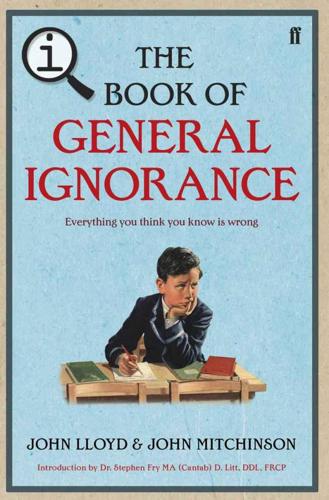
QI: The Book of General Ignorance - The Noticeably Stouter Edition
by
Lloyd, John
and
Mitchinson, John
Published 7 Oct 2010
Unfortunately, it doesn’t mention his sun-centred theory. The reason we know about it at all is due to a single remark in one of Archimedes’ texts, which mentions Aristarchus’ theories only to disagree with them. Copernicus was certainly aware of Aristarchus because he credits him in the manuscript of his epoch-making On the Revolutions of the Heavenly Spheres. However, when the book was printed in 1514, all mentions of the visionary Greek had been removed, presumably by the publisher, nervous of it undermining the book’s claims for originality. Who invented the Theory of Relativity? It wasn’t Einstein. The theory of relativity was first stated by Galileo Galilei in his Dialogue concerning the World’s Two Chief Systems in 1632.
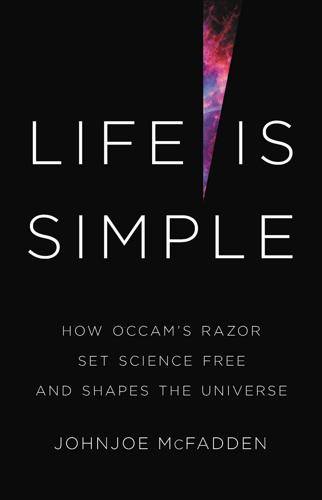
Life Is Simple: How Occam's Razor Set Science Free and Shapes the Universe
by
Johnjoe McFadden
Published 27 Sep 2021
In 1517, he received a letter from the Pope’s secretary, Cardinal Nicholas Schoenburg, urging Copernicus ‘to communicate your discovery to the learned world’. Copernicus initially appeared to take the cardinal’s advice to heart as he began work on an extensive account of his heliocentric model in De revolutionibus orbium coelestium (On the Revolutions of the Heavenly Spheres). Yet he never attempted to publish his manuscript nor, as far as we know, allowed anyone to read it. The earth doesn’t move Luther In the following decades, Copernicus’s treatise describing his heliocentric model of the cosmos was mostly ignored or derided; but it did circulate widely, reaching even the centre of the Lutheran world at Wittenberg.

Empire of the Sum: The Rise and Reign of the Pocket Calculator
by
Keith Houston
Published 22 Aug 2023
A later edict in Padua stated that book prices had to be listed in Roman numerals.92 Outside Italy, Roman numerals clung on in mercantile circles until the fifteenth century and, in more conservative environs such as monasteries, even longer than that.93 Even in 1543, Nicolaus Copernicus’s De revolutionibus orbium coelestium (On the Revolutions of the Heavenly Spheres), a text widely considered to mark the start of the Scientific Revolution, contained a mix of Roman, Hindu-Arabic, and written-out numbers.94 Ultimately, however, the advantages of Hindu-Arabic numerals became too hard to ignore. Johannes Gutenberg’s movable type, a refinement of an age-old craft first developed in China, helped stabilize the written forms of the new numbers.
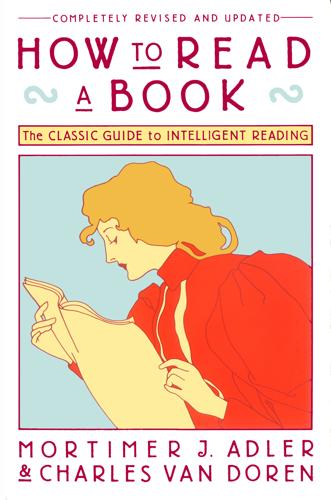
How to Read a Book
by
Mortimer J. Adler
and
Charles van Doren
Published 14 Jun 1972
*Troilus and Criseyde, *Canterbury Tales) 39. Leonardo da Vinci (1452-1519) Notebooks 40. Niccolò Machiavelli (1469-1527) * The Prince Discourses on the First Ten Books of Livy 41. Desiderius Erasmus (c. 1469-1536) The Praise of Folly 42. Nicolaus Copernicus (1473-1543) * On the Revolutions of the Heavenly Spheres 43. Sir Thomas More (c. 1478-1535) Utopia 44. Martin Luther (1483-1546) Three Treatises Table-Talk 45. François Rabelais (c. 1495-1553) * Gargantua and Pantagruel 46. John Calvin (1509-1564) Institutes of the Christian Religion 47. Michel de Montaigne (1533-1592) * Essays 48.
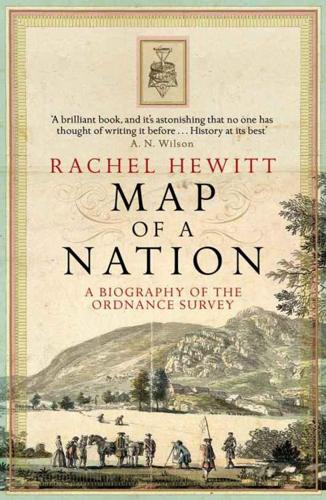
Map of a Nation: A Biography of the Ordnance Survey
by
Rachel Hewitt
Published 6 Jul 2011
It is accepted by historians of science that ‘accuracy’ was a relatively novel concern for eighteenth-century astronomers, geodesists and map-makers, who became preoccupied with the idea of the ‘quantifying spirit’ in attempting to emulate the certainty of Newton’s Principia Mathematicia and realise the Enlightenment ideal of perfect measurement. The historian of science Thomas Kuhn has termed this quest for accuracy a ‘second scientific revolution’, after the first scientific revolution that is usually taken to refer to the publication of Copernicus’s De revolutionibus orbium coelestium (On the Revolutions of the Heavenly Spheres) in 1543. But numerous factors could threaten the precision of a measurement, such as the minuscule erosion of instruments’ parts, often simply through use; the expansion and contraction of apparatus according to changes in temperature; imperfect eyesight; or mistakes in calculations.

Lonely Planet Poland
by
Lonely Planet
Its spectacular Moorish hall (clearly influenced by the Alhambra in Granada) on the 1st floor was created as a memorable setting for the display of armour and military accessories. Sometimes in the high season special exhibits are set up in the museum, including copies made of valuable books, such as Copernicus’ masterwork, De Revolutionibus Orbium Coelestium (On the Revolutions of the Heavenly Spheres). The original is safely stored here in Kórnik Library, part of the Polish National Academy of Sciences. A coach house on the opposite side of the road holds three London coaches, brought from Paris by Jan Działyński in 1856, whereas the Galeria Klaudynówka, a servants’ house from 1791, sometimes has exhibitions on special topics.